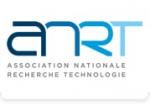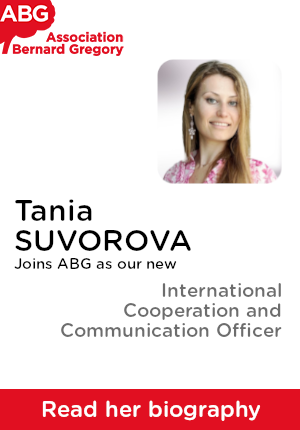Qubits creation in wide bandgap semiconductors by swift heavy ion irradiation
| ABG-134161 | Job | Junior |
| 2025-11-18 | Fixed-term 12 Month | > €35,000 and < €45,000 annual gross |
Employer
Fondé en 2008 suite au regroupement de deux laboratoires, le Centre de recherche sur les Ions, les Matériaux et la Photonique (CIMAP) est un laboratoire de recherche qui se concentre sur deux thèmes majeurs : la matière excitée et les défauts d’une part, et les matériaux et l’optique d’autre part. Le CIMAP rassemble un large éventail de disciplines grâce à sa longue tradition de structuration de la recherche en Physique à l’échelle de la Basse-Normandie et au niveau national.
Le rôle structurant du CIMAP se manifeste également à travers plusieurs plateformes de recherche, notamment la plateforme d’accueil CIRIL, la plateforme de caractérisation et la Plateforme Normande des Matériaux pour l’Optique (PNMO) mais aussi à travers des fédérations de recherche telles que EMIR&A sur l’irradiation des matériaux, IRMA sur les matériaux avancés et Normandie oncologie autour des traitements du cancer.
Les sujets de recherche abordés au sein du laboratoire sont variés, allant de la modification de la matière en phase gazeuse ou condensée par irradiation ionique, aux matériaux tels que les cristaux pour les lasers, les semi-conducteurs et les couches minces utilisés pour l’émission et la conversion de la lumière. L’ambition du CIMAP est de tirer parti de sa pluridisciplinarité pour enrichir l’utilisation des différents outils et favoriser la culture scientifique du laboratoire, afin de repousser toujours plus loin les frontières du savoir dans ces domaines.
Position and assignments
Single deep-level point defect in wide bandgap materials have attracted great attention as they could be used as single photon emitter with desirable spin properties for applications in quantum information processing. For instance, the nitrogen-vacancy (NV) center in diamond, which consists of a carbon vacancy next to a substitutional nitrogen atom, is distinguished by its robustness as a qubit; it can be initialized, manipulated, and measured with high fidelity at room temperature. This exceptional property of the NV center in diamond has stimulated the search for similar systems. Interestingly, among the proposed defects as qubits in SiC, divacancies (VcVSi) have experimentally demonstrated to exhibit properties similar to the diamond NV center. In AIN, based on Density Functional Theory calculation, complexes of impurity dopant (e.g. Ti and Zr) on Al site with a nitrogen vacancy (TiAl-VN and ZrAl-VN), and an aluminum vacancy complexed with an oxygen impurity at a neighboring nitrogen site VAl-ON were proposed as candidates for point defect-based qubits. Similarly, VGa-ON and NiGa-VN were proposed in GaN. The QUWIS project, funded by the French National Research Agency (ANR), propose to use Swift Heavy Ion (SHI) irradiation to generate qubits in nitride semiconductors (GaN and AlN), which benefit from more mature material processing and device integration technologies than diamond. They are more readily available at a lower price and offer easy integrability in electronic or photonic devices, which is important when considering future device development. Moreover, with SHI, chains of defects are created with controlled density in nanometric cylindrical volumes. The chains can then be isolated with greater precision than that achieved with recently adopted methods for creating localized qubits: femtosecond laser writing or low energy ion implantation either through a mask or with a focused ion nano-beam. Our overall goal is to create/activate by SHI irradiation defects with a spin configuration in a triplet state while minimizing other types of irradiation-induced defects that could quench the luminescence. For a full description of the desired characteristics of the defects, an Optically Detected Magnetic Resonance (ODMR) setup will be developed.
Geographic mobility:
Telework
Starting date
Profile
The candidate must hold a PhD in physics, with a good knowledge of optical defect characterization with experience in ion irradiation effect and ODMR measurements. The work will be conducted at CIMAP laboratory within the GANIL area. Previous experience on a large instrument and device development will be valued.
Vous avez déjà un compte ?
Nouvel utilisateur ?
Get ABG’s monthly newsletters including news, job offers, grants & fellowships and a selection of relevant events…
Discover our members
 ASNR - Autorité de sûreté nucléaire et de radioprotection - Siège
ASNR - Autorité de sûreté nucléaire et de radioprotection - Siège  Ifremer
Ifremer  TotalEnergies
TotalEnergies  Institut Sup'biotech de Paris
Institut Sup'biotech de Paris  MabDesign
MabDesign  ONERA - The French Aerospace Lab
ONERA - The French Aerospace Lab  Groupe AFNOR - Association française de normalisation
Groupe AFNOR - Association française de normalisation  Généthon
Généthon  SUEZ
SUEZ  Servier
Servier  Tecknowmetrix
Tecknowmetrix  Nokia Bell Labs France
Nokia Bell Labs France  CESI
CESI  Aérocentre, Pôle d'excellence régional
Aérocentre, Pôle d'excellence régional  ADEME
ADEME  ANRT
ANRT  MabDesign
MabDesign  Laboratoire National de Métrologie et d'Essais - LNE
Laboratoire National de Métrologie et d'Essais - LNE  CASDEN
CASDEN  PhDOOC
PhDOOC

